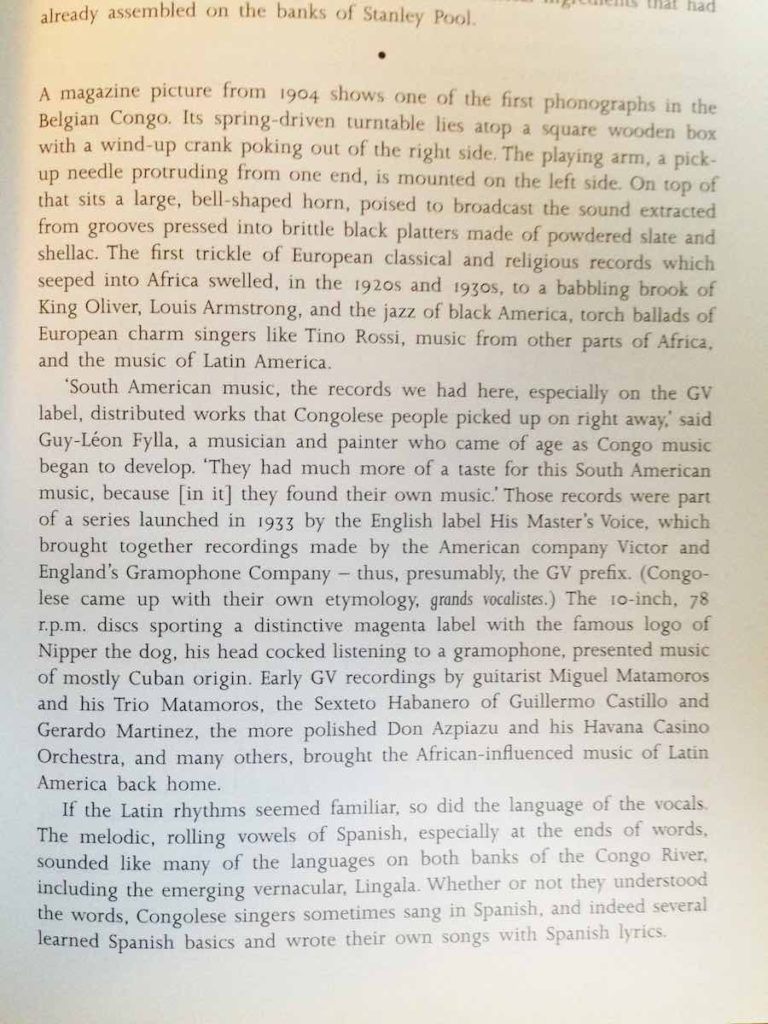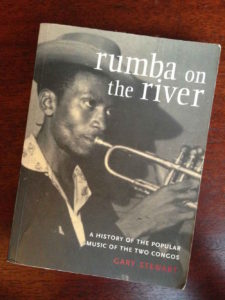In early 2014 I found this post on Brian Shimkovitz’s Awesome Tapes From Africa blog. Jeff Bryant from my old band Pollens had turned me onto this blog (and a lot of African music in general). In 2014 Awesome Tapes was still a music sharing download blog. Today it’s actually become a label and distribution outfit for African music in the United States. Shimkovitz tours doing DJ sets of amazing African music, and if you get the chance go see him. It’s unique.
Anyway, I had pulled a fair amount of albums off Awesome Tapes by this time, but this mixtape just grew on me endlessly until I was obsessed with it. Soon I started looking for more music by Kiam/Orchestre Kiam, and trying to learn everything I could about them, falling further and further down the rabbit hole of trying to find English search results for Congolese French/Lingala music, but Kiam became the most profound musical influence in my life since I played in Pollens. Never did I expect that my favorite band would be singing in a language I couldn’t understand (and also broken up before I was born).
Kiam played rumba rock, cavacha, soukous music in the early to late 70’s in Kinshasa. They were one of the Verckys stable of bands, and were relatively obscure within the scene. They had a few hits but never achieved star status, and never had a big vocal name fronting them.
However, they nailed all the elements like no one else I’ve heard. The vocalists were all very strong, the rhythm section was super solid and bouncy and driving and exciting, the songwriting was top notch, and most strikingly they had the best guitarists in the whole scene to my ear. Technically, the only hard soukous player on a higher plane from this era is probably Orchestre Stukas’s lead player Samunga Tediangaye,. The real magic however was not in Kiam’s technical prowess but their melodic ability. Both their vocal choruses and calls and their sebene lines are absolute platonic forms of catchiness. The lead guitar plays perfect melodies with a soaring treble and plenty of reverb. When the rhythm guitarist takes over, his tone mid-rangey and scraping in comparison, the lines are fascinatingly weird. I swear he was tapping years before Eddie Van Halen thought of it, a lot of self-taught African musicians came up with unique ways to play their instruments.
Unlike countless musicians and bands that came out of the rumba and soukous scene, Kiam never achieved the kind of recognition that would even warrant a Wikipedia page. However there is a strong cult following online, and broad consensus from those who heard them is that they are one of the best hard soukous bands of all time. They’re often put on a level with Zaiko Langa-Langa, who played in the same era without horns and also featured great guitar and vocal work in driving soukous. But to me Kiam was comparatively very consistent. Langa-Langa has decades of material and I’d name about 15 songs of theirs that I really like. Of Kiam’s 35 or so songs (most of which are around ten minutes in length as was common in this era), almost all are fantastic. Thinking back on the music that resonated with me over my whole life, I came to realize that I had found a band that had everything I’d ever wanted. It was one of those moments when you love a piece of art so much that you get a little angry because you didn’t create it. It just seemed to fit my tastes perfectly.
To give an idea of the difficulty of finding good information about an obscure soukous band from the mid-70’s, here is the best site I found with the most information in one place about Kiam. Yes, that’s a Geocities site, in Japanese and French. I’m shocked it still exists.
In mid-March 2014 sent the Awesome Tapes mixtape post to my brother Ryan in a text message. Ryan was a huge fan of many African genres and I knew he’d enjoy it. He texted back, “Great sunny soukous dance music.” At the time I had barely heard the word “soukous,” and didn’t know to ascribe it to Kiam. So Ryan’s remark gave me something to google, which of course I did. It was a watershed moment.
A week or so after our exchange, Ryan killed himself. He’d been struggling with severe anxiety and mental illness for a decade or more. His text about the band was the last communication I had from him. I went on a planned musical retreat soon after that, and channeled everything about his death into a set of Garageband demos that became the first Northern Thorns songs.
Though I’d love Kiam no matter what, this music will forever be linked in my mind with Ryan and his suicide. I can’t listen to it without thinking about him.
– Adam


